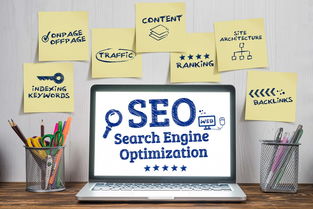Content:
Introduction
In the digital age, businesses are no longer constrained by geographical borders or traditional marketing methods. The rise of the internet and digital technologies has paved the way for innovative marketing strategies that can effectively reach a global audience. Digital Marketing has become an indispensable tool for business growth, offering cost-effective and measurable ways to engage customers and build brand awareness. In this comprehensive guide, we will explore the ultimate strategy for leveraging digital marketing to fuel business growth and achieve success.
Chapter 1: Understanding Digital Marketing
Digital marketing encompasses a broad range of activities that use digital channels such as search engines, social media, email, and websites to promote products or services. To effectively utilize these channels, it is essential to understand the core components of digital marketing, including search engine optimization (SEO), Content Marketing, social media marketing, pay-per-click advertising (PPC), and email marketing. Each of these elements plays a critical role in crafting a cohesive digital marketing strategy that resonates with your target audience.
Chapter 2: Setting Clear Objectives
Before diving into the digital marketing pool, it is crucial to establish clear objectives. These should be specific, measurable, achievable, relevant, and time-bound (SMART). Whether your goal is to increase brand awareness, generate leads, boost website traffic, or drive sales, your objectives will guide your strategy and help you measure the success of your campaigns.
Chapter 3: Knowing Your Audience

Understanding your target audience is paramount to the success of your digital marketing efforts. This involves conducting market research to gather data on demographics, interests, behaviors, and needs. By creating detailed buyer personas, you can tailor your marketing messages and choose the right channels to effectively reach and engage your ideal customers.
Chapter 4: Optimizing Your Website
Your website serves as the central hub of your digital marketing efforts. It should be User-friendly, visually appealing, and optimized for both users and search engines. This includes having a responsive design, clear navigation, compelling content, and implementing SEO best practices such as keyword research, meta tags, and high-quality backlinks.
Chapter 5: Content Marketing
Content is king in the world of digital marketing. High-quality, valuable content can attract and retain your audience, improve SEO rankings, and establish your brand as an authority in your industry. This includes blog posts, videos, infographics, e-books, and other forms of content that educate, entertain, or inspire your audience.
Chapter 6: Leveraging Social Media
Social media platforms offer unparalleled opportunities to connect with your audience and promote your brand. Identify the platforms where your target audience spends time and create a content calendar to maintain a consistent presence. Engage with your followers, monitor trends, and use paid advertising to amplify your reach.
Chapter 7: Email Marketing
Email marketing remains a highly effective way to nurture leads and maintain customer relationships. Build an email list through subscriptions and gated content, and segment your audience to deliver personalized, relevant messages. Craft compelling subject lines and optimize your emails for mobile devices to ensure maximum engagement.
Chapter 8: PPC Advertising
Pay-per-click advertising allows you to reach potential customers who are actively searching for products or services related to your business. Platforms like Google Ads and Facebook Ads enable you to target specific demographics, monitor ad performance, and adjust your budget accordingly. PPC can drive immediate traffic to your website and generate leads quickly.
Chapter 9: Analytics and Performance Tracking
To measure the effectiveness of your digital marketing efforts, it is essential to track key performance indicators (KPIs) such as website traffic, conversion rates, click-through rates, and return on investment (ROI). Tools like Google Analytics provide insights into user behavior and campaign performance, allowing you to make data-driven decisions and optimize your strategy for better results.
Chapter 10: Continuous Improvement and Innovation
Digital marketing is an ever-evolving landscape. To stay ahead of the competition, it is crucial to continuously test new strategies, experiment with emerging platforms, and keep abreast of the latest trends and algorithm updates. Embrace a culture of innovation and always be ready to adapt your approach based on what works best for your business.
Conclusion
Digital marketing is not just another marketing channel; it is a strategic imperative for businesses seeking growth and success in today's digital era. By understanding the various components of digital marketing, setting clear objectives, knowing your audience, optimizing your website, creating valuable content, leveraging social media, utilizing email marketing, employing PPC advertising, tracking analytics, and continuously improving and innovating, you can develop a robust digital marketing strategy that drives results and propels your business forward. Remember, success in digital marketing requires patience, perseverance, and a commitment to ongoing learning and adaptation. With a well-executed strategy, however, the rewards can be significant, leading to increased visibility, stronger customer relationships, and ultimately, business growth.
评论列表 (0条)